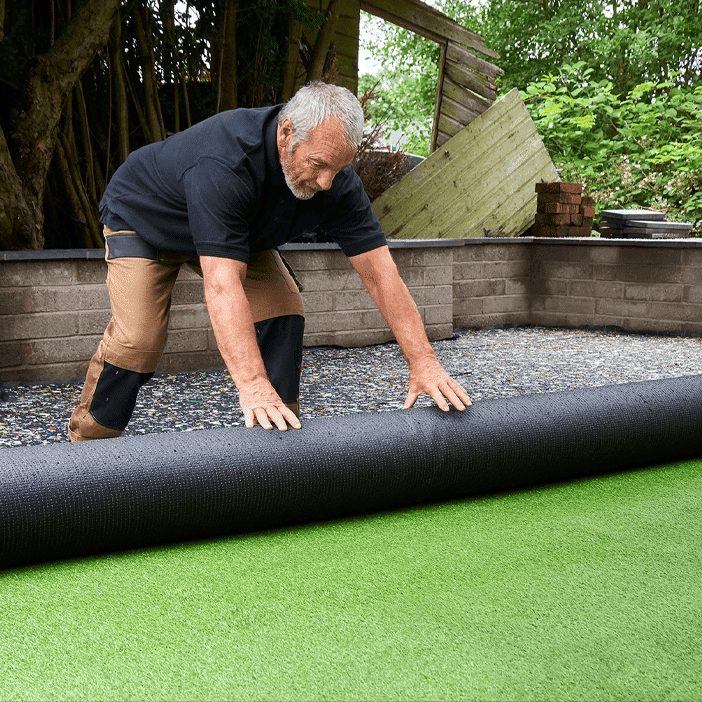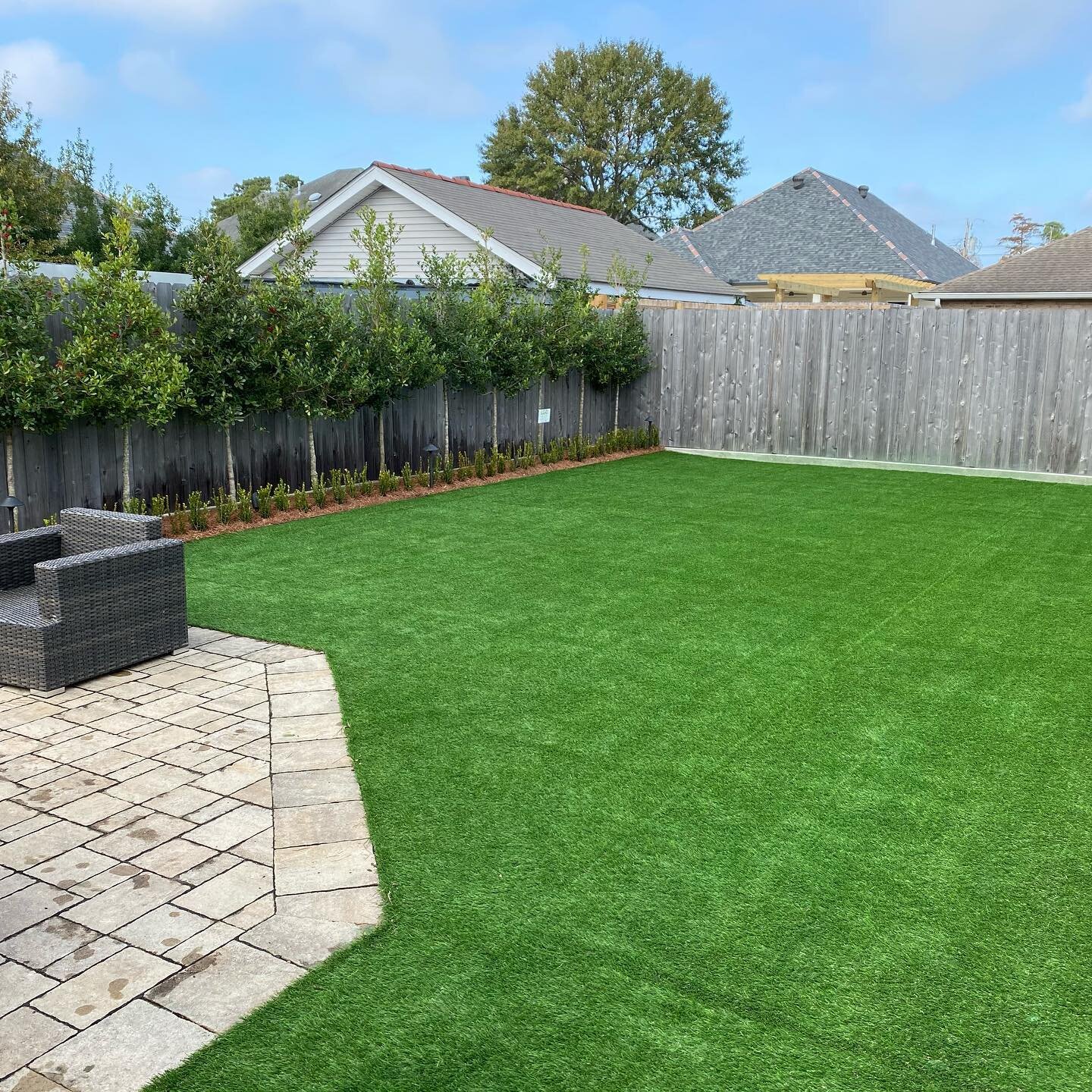Explore the Environmental Conveniences of Opting for Artificial Turf Solutions
The adoption of man-made lawn options provides an engaging chance to attend to pushing environmental challenges. By significantly lowering water use and minimizing the application of dangerous chemicals, these options not just advertise sustainable landscaping however additionally secure neighborhood ecosystems. The lower carbon impact connected with decreased maintenance tasks contributes to a more lasting strategy to land administration. The effects of these benefits extend past simple preservation efforts, raising concerns concerning their long-term impact on habitat preservation and overall environmental balance. Discovering these dimensions exposes a complex interaction worth thinking about.
Water Conservation Advantages
One of the most substantial benefits of fabricated grass is its capacity to conserve water. In comparison, man-made turf does not need watering, substantially minimizing the general demand for water resources.
By removing the requirement for routine watering, fabricated turf adds to lasting landscape practices and assists minimize the environmental impact of excessive water intake. The preservation of water expands to the decrease of drainage, which can lead to dirt erosion and waterway contamination.
In addition, the installment of synthetic grass allows towns and homeowners to allot water sources much more effectively, concentrating on necessary usages such as drinking water and farming. The shift towards fabricated turf not only promotes responsible water use however additionally aligns with broader ecological objectives targeted at maintaining natural resources.
As communities progressively focus on sustainability, the water preservation advantages of artificial turf provide a compelling situation for its fostering in business and property landscaping projects.
Decreased Chemical Usage
The transition to synthetic grass substantially lowers the dependence on chemical therapies typically made use of in all-natural lawn upkeep. Conventional turf monitoring typically involves the application of fertilizers, herbicides, and pesticides to advertise development and control parasites. These chemicals can present dangers to human health and wellness, local wildlife, and the environment, contributing to soil and water contamination.
In contrast, man-made lawn gets rid of the demand for these hazardous materials. By lessening the release of artificial compounds right into the environment, man-made grass promotes healthier soil and water systems.
Additionally, the absence of chemical overflow associated with artificial lawn setups assists shield regional rivers from pollution, supporting marine life and preserving biodiversity. Arizona turf. As communities increasingly focus on lasting techniques, choosing synthetic grass provides a practical remedy that lines up with environmental preservation objectives. Via this shift, residential or commercial property proprietors can delight in lavish green spaces without compromising environmental health, paving the means for a much more lasting future
Reduced Carbon Impact

Moreover, the installation of fabricated lawn can result in significant water conservation. Natural yards call for considerable quantities of water for watering, which not just includes in the carbon impact connected with water removal and treatment but likewise stress local water sources. In contrast, synthetic grass needs minimal maintenance, needing no watering, thereby significantly decreasing water use and its connected power costs.
Furthermore, the long life of synthetic grass adds to its decreased carbon effect. With a life-span of approximately 15 years or even more, the need for frequent replacements is diminished, resulting in less waste and lower energy consumption in manufacturing and dealing with traditional turf alternatives. Generally, synthetic grass offers a sustainable option for environmentally conscious landscape design.
Environment Conservation
Environment preservation is an important consideration in the argument over landscaping options, especially when comparing artificial lawn to all-natural lawn. Natural grass yards often call for considerable upkeep, including using chemicals, herbicides, and plant foods, which can negatively influence regional environments. These chemicals can leach into the dirt you can try this out and waterways, damaging indigenous flora and animals and interrupting neighborhood environments.
On the other hand, fabricated turf offers an opportunity to lower the eco-friendly impact of landscape design. By opting for artificial turf, homeowners can lessen the interruption of all-natural habitats linked with typical lawn care methods. Synthetic grass gets rid of the need for harmful chemicals, consequently securing neighboring wildlife and preserving the honesty of surrounding environments. Moreover, the setup of synthetic grass can result in the conversion of previous grass areas into more biodiverse click this landscapes, such as pollinator yards or native plant areas, which can support regional wild animals.
Ultimately, the transition to synthetic grass not just preserves water and lowers maintenance efforts but additionally promotes a much more unified connection between human tasks and the all-natural setting, advertising habitat preservation at the same time.
Long-Term Sustainability
Long-lasting sustainability is an essential element in evaluating the benefits of synthetic grass over typical turf lawns. Among one of the most substantial benefits of fabricated grass is its longevity; it can last approximately 15-20 years with very little maintenance, whereas all-natural grass requires regular reseeding and replacement. This durability reduces the need for consistent sources, such as water, plant foods, and pesticides, which are essential for maintaining a healthy grass lawn.
In addition, synthetic grass contributes to a reduction in carbon exhausts related to lawn treatment equipment. Typical lawns usually call for gas-powered mowers, leaners, and blowers, all of which add to air contamination. Artificial turf companies phoenix. On the other hand, synthetic grass gets rid of the demand for such equipment, promoting a cleaner atmosphere
Moreover, the manufacturing of artificial grass significantly makes use of recycled materials, boosting its sustainability account. As manufacturers embrace environmentally friendly practices, the environmental impact of synthetic grass continues to decrease.

Verdict
The adoption of synthetic grass options provides substantial ecological benefits, consisting of significant water preservation, lowered dependence on hazardous chemicals, and a lower carbon impact. Additionally, synthetic turf aids in preserving natural habitats by reducing land disruption and advertising long-lasting sustainability through making use of long lasting go to my site products. Collectively, these elements underscore the capacity of synthetic grass to add favorably to ecological wellness and provide a viable choice to typical landscaping practices in an increasingly resource-conscious world.
In comparison, man-made turf does not require watering, dramatically reducing the total demand for water sources. By reducing the launch of artificial compounds right into the community, artificial lawn advertises much healthier soil and water systems.
Furthermore, the installment of synthetic turf can result in considerable water conservation. In contrast, fabricated lawn needs marginal maintenance, needing no watering, thus substantially reducing water usage and its connected power expenses.
